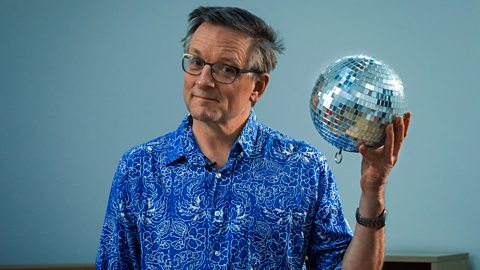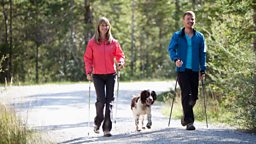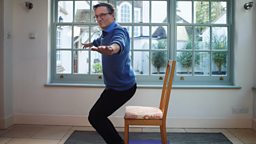Why dancing is the best way to enhance your brain and fitness
Dancing is great fun: it can connect you with others and lift your mood. But research is shedding light on just how much it can benefit your health and wellbeing.
Not only can dancing improve your mental health and memory, as well as reduce pain – it can even be better for your brain and fitness than traditional exercise.
In Just One Thing, Michael Mosley explores whether dancing is something you should be doing regularly to boost your health.

How can dancing help your brain?
Michael Mosley busts a move
Get your boogie on
Dancing undoubtedly improves your fitness. It has been shown to support your mental health and it can even boost your memory. It can be used effectively for depression and it’s good for social connection. Dance has also been shown to help manage the symptoms of a number of conditions, including Parkinson’s disease and dementia.

Dancing can greatly increase the brain’s hippocampus – an area which plays an important role in learning, memory and navigation in space.
So, why is dancing so powerful?
One of its most fascinating benefits is the fast and significant impact of dancing on your brain chemistry.
Feel good moves
Scientists think that human society may have evolved a special relationship to dance and this could explain why it can trigger positive feelings.
In one study, researchers from the University of Oxford found that dancing in rhythm with others could significantly raise the participants’ feelings of social bonding. They also found that it had a surprising effect on their pain threshold, suggesting it can release pain-relieving endorphins, the feel-good chemicals, after just 10 minutes of dancing!
Strictly the best
So how does dancing beat other forms of exercise? It’s partly because dance combines several important aspects: music, movement, and social activity.
When an Australian team surveyed almost 50,000 adults about their hobbies, and followed them up 12 years later, what they found was surprising. Dancing was linked to a 46% reduced risk of stroke or heart attack, more so than other types of activities at the same intensity . Frequent walkers, for example, didn’t benefit to the same degree.
Another study spent five years talking to older adults about their hobbies and dancing was associated with the greatest reduced risk of dementia – by a huge 76% .
In Just One Thing, former dancer-turned-neuroscientist Dr Julia F Christensen from the Max Plank Institute in Germany explains that when you are dancing, you are multi-tasking to a far greater degree than in other activities, really challenging your brain in the process.
Nimble feet, nimble brain
You can dance your way to better health – and even a nimbler brain. It can trigger new connections in your brain and encourage neuroplasticity, which is the brain’s ability to change.

In one study involving healthy volunteers, a 30-minute salsa class was shown to boost spatial working memory by 18% after just one session.
Surprisingly, brain imaging studies show that taking up dancing can greatly increase the brain’s hippocampus – an area which plays an important role in learning, memory and navigation in space. In one long-term study, volunteers in their 60s were asked either to take up dancing, once a week for 18 months, or do a more traditional workout. After 18 months, brain scans revealed both groups experienced an increase in the size of the hippocampus, but the change was more pronounced in the dancing group.
Let’s get physical
Dancing is a valuable way to increase your physical activity. It can get your heartbeat up over 140 beats per minute and help you burn quite a few calories – around 340 every half an hour. It has a great combination of low- and high-intensity bouts during the exercise. On top of that, new routines are a fun way to challenge your brain.
Dance like no-one is watching
The great news is that it really doesn’t matter how good you are! In fact, doing it purely for enjoyment is even better. Dr Christensen explains that competitive dancers often have high levels of cortisol when they are performing. High levels of this stress hormone can down-regulate the immune system. So it’s key to make sure, whatever level you’re at, you make room for dancing for fun.
If you’re looking for a new way to get fit, why not dust off your dancing shoes and tune into Michael Mosley’s podcast Just One Thing on �鶹�� Radio 4 and �鶹�� Sounds to find out more.

















































